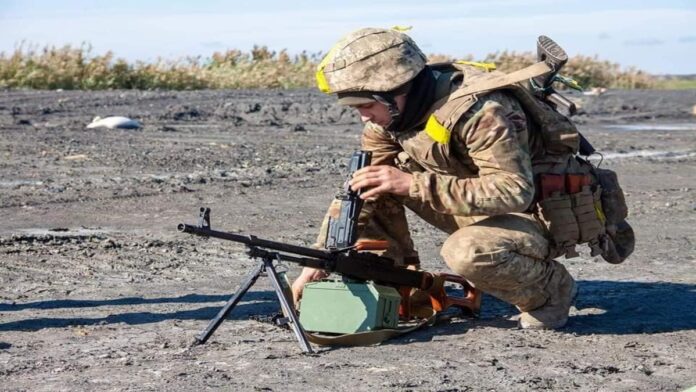Intense trench firefight was captured on headcam of Ukrainian infantryman, who was in the offensive. This video reveals a number of problems and mistakes made by both sides. Usually, some mistakes in any fight can be prevent by using correct gear. Check out this link and choose something you might need. As real military analysts, we should analyze these problems. Don’t forget to subscribe to our YouTube channel.
History of trench firefight
Trench firefight is a type of combat in which soldiers fight from trenches, or long, deep ditches, rather than from traditional battlefields. This type of warfare was first used during the Napoleonic Wars in the early 19th century, but it became particularly prevalent during World War I.
During World War I, the use of trenches became widespread as both sides of the conflict found themselves in a stalemate. Trenches offered a way for soldiers to defend themselves against enemy attacks, and they also provided a way to protect against the new and devastating technology of the time, such as machine guns and artillery.
As a result, the battlefields of World War I became a network of interconnected trenches, with soldiers living and fighting in them for months or even years at a time. Conditions in the trenches were often miserable, with soldiers facing exposure to the elements, disease, and constant threat of enemy attack.
Despite the harsh conditions, trench firefight proved to be a highly effective tactic, and it continued to be used in various conflicts throughout the 20th century, including World War II and the Korean War.
Today, the use of trenches is less common, but they are getting more and more popularity on the eastern front of the European civilization.
Problems of the offensive side
Luckily there is an interview with the owner of the headcam, who is telling a longer version of the story. Hence it is much simpler to analyze this even from the offensive side perspective.
First of all, the advancing infantry was transported to the very edge of the enemy trench using IFVs, namely BMP-1 and BMP-2 in this case. The transport has withdrawn after initial firefight due to high risk of being destroyed. This is arguably not a great decision, as having some heavy weapons on short range during the offensive are very helpful. Yet, different military analysts have opposing views on the role of the armored transport on the battlefield.
Second problem was the inability to protect the storming group from the indirect mortar shelling. At some point they were pinned down by the artillery and were only ready to continue the mission after the shelling stopped. Would have been the mission better planned, the enemy mortar crews within 5-6 kilometers radius were eliminated by the counter-battery fire or UAV drones.
Last one is the lack of ammunition the offensive group could carry with them into battle. At some point in the interview, the author of the video claims that they have used all the hand grenades and only had 1-2 magazines each. And this is a complex problem, as the modern soldier carries only very limited amount of ammunition which will last minutes in an intense firefight. The average maximum would be 10 magazines, 5-6 grenades and maybe a disposable grenade launcher. This is inadequately little amount of war material. New solutions have to be developed for such situations.
Problems of the defensive side
The defensive side had the advantage at the beginning of the this trench firefight. Prior to the advance, they could have damaged the attacking vehicles, which would stop the whole operation and they would have hold the trenches. Yet, in a typical Russian manner, infantry has to pay with its blood for the inadequacy of the reconnaissance teams.
Secondly, it looks like the positions were neither well constructed nor the defenders knew what they are doing. Essentially they were attacked by a single infantry section. According to all laws of war, even a squad should be able to protect itself from such treat. Yet, a modern battle is a very swift and there is no time for decision making. Modern trench firefight is definitely much different from what it used to look like 100 years ago and despite all the odds it looks like the offensive side has the advantage.













